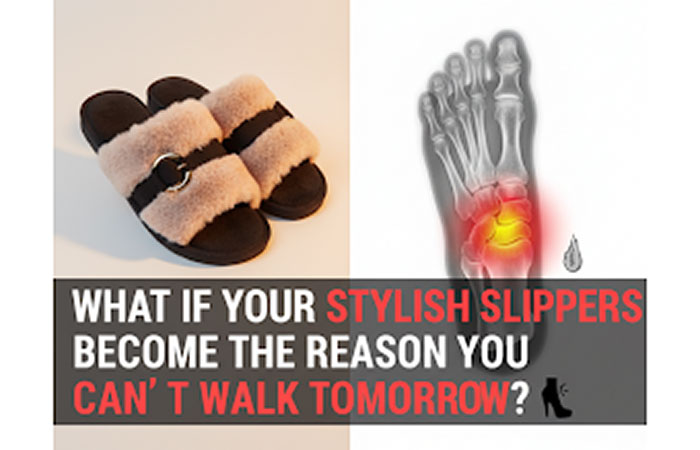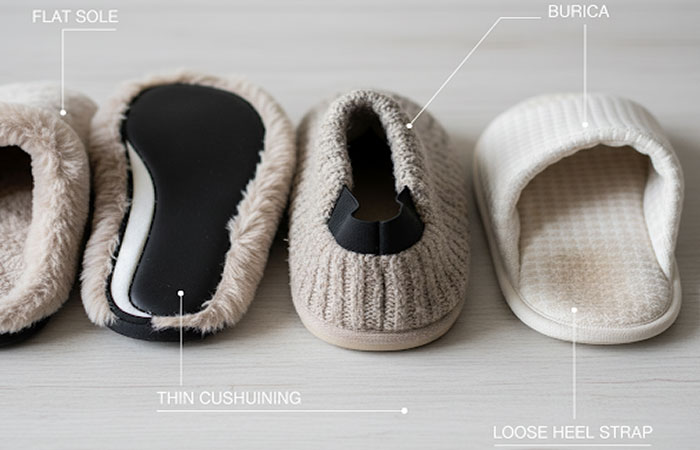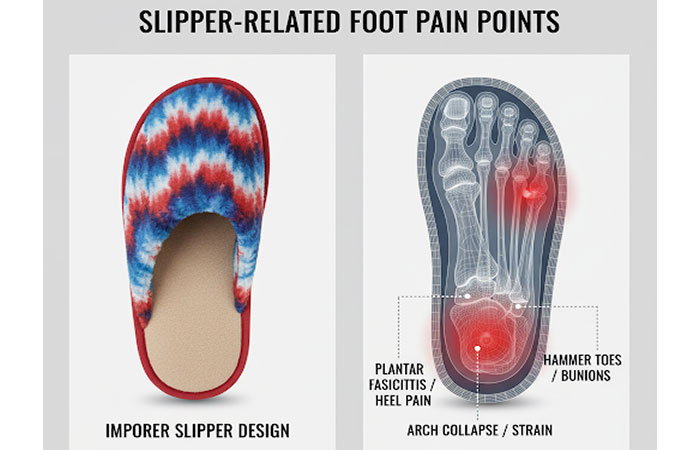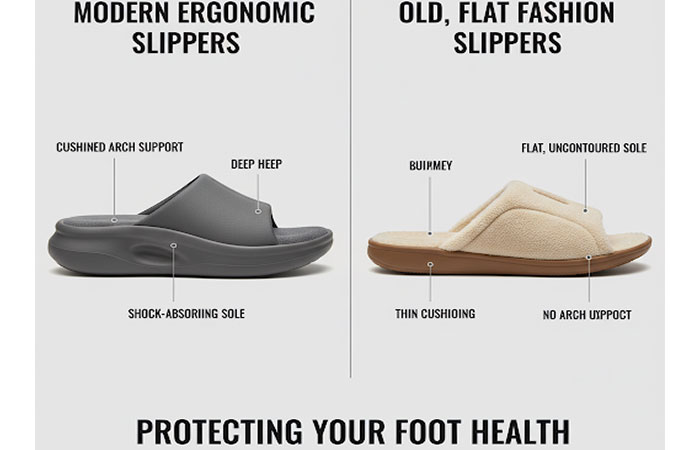

Slippers and stylish open footwear have become essential year-round fashion for millions—whether lounging at home or heading out for casual errands. But behind the comfort and aesthetic appeal lurks a hidden health risk. Poorly constructed slippers, mules, slides, and flip-flops often lack the features needed for real support—and can quickly turn cozy style into chronic pain or even serious injury. In 2025, new product innovation and wellness trends are emerging to keep feet happy, but understanding the risks and opportunities is critical for every style-conscious consumer.


The “foot bone’s connected to the heel bone, the heel bone’s connected to the ankle bone” principle means:
Opportunity: Retailers and clinics now partner to guide consumers toward healthy choices through in-store assessments and educational campaigns.

Limit wearing time for purely fashionable, unsupportive slippers.
Stretch and strengthen feet: calf raises, arch lifts, and toe spreads help offset damage from bad footwear.
Replace worn-out slippers regularly—if soles feel thin or unsupportive, upgrade to a healthier version or add orthotic insoles.
Early intervention can reverse damage, avoid long-term pain, and keep you moving comfortably.
Stylish slippers and slides may look great in social media or on city streets, but ignoring the principles of supportive design, fit, and function risks tomorrow’s health for today’s fashion. In 2025, healthy foot choices don’t mean giving up style—new slippers blend ergonomic support, high-tech materials, and designer appeal for optimal wellness. Avoid the pitfall of pain: invest in comfort as much as aesthetics, and walk confidently for years to come.